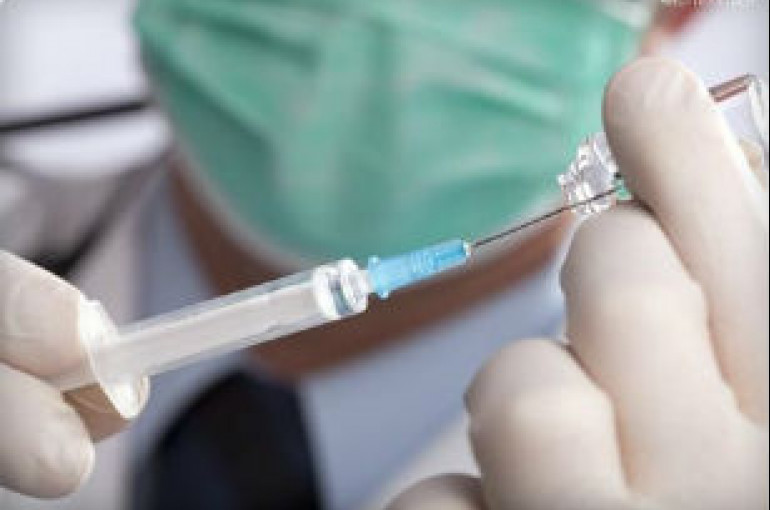
Shannon Wood Rothenberg walked into her annual physical feeling fine. But more than a year later, she’s still paying the price. Routine bloodwork from the spring 2018 visit suggested anemia, of which she has a family history. Her doctor advised pills. After two months with no change, the doctor sent Rothenberg to a hematologist who could delve into the cause and infuse iron directly into her veins.
So last July, the 48-year-old public school teacher went twice to a cancer center operated by Saint Joseph Hospital in Denver, where she received infusions of Injectafer, an iron solution. When the bill arrived in March, after prolonged negotiations between the hospital and her insurer, Rothenberg and her husband were floored.
The hospital had billed more than $14,000 per vial. Since her treatment was in-network, though, her insurance plan negotiated a much cheaper rate: about $1,600 per vial. She received two vials. Insurance paid a portion, but Rothenberg still owed the hospital $2,733, based on what was still unpaid in her family’s $9,000 deductible.
 “I have twins who are going to college next year. I’m already a bit freaked out about upcoming expenses,” she said. “I don’t have $2,700 sitting around.”
“I have twins who are going to college next year. I’m already a bit freaked out about upcoming expenses,” she said. “I don’t have $2,700 sitting around.”
About 9 million Americans on Medicare have gotten iron infusions each year since 2013, the first year for which data is available; that’s almost one for every five people covered by the government insurance program for people over 65. Anemia, the principal outgrowth of low iron levels, can cause headache, fatigue and irregular heartbeat. People with certain medical conditions, such as inflammatory bowel disease and kidney failure, are prone to low iron levels and anemia, which can be severe.
In other countries, doctors usually would not be so quick to resort to iron infusions — especially in healthy patients like Rothenberg, who have no underlying disease and no obvious symptoms.
“It would be extremely unlikely that IV iron would be administered” in Britain, said Richard Pollock, a health economist at the London-based Covalence Research Ltd. who studies iron products. But one key difference between this country and others is that American physicians and hospitals can profit handsomely from infusions. Under Medicare, doctors are paid in part based on the average sales price of the prescribed drug, which critics say gives them an incentive to pick the newer, more expensive option.
 For those with private insurance, hospitals and doctors can mark up prices even more. Intravenous infusions, generally administered in a hospital or clinic, also generate a “facility fee.” That creates a financial incentive to favor the most expensive infused treatments rather than pills or simple skin injections that patients can use readily at home.
For those with private insurance, hospitals and doctors can mark up prices even more. Intravenous infusions, generally administered in a hospital or clinic, also generate a “facility fee.” That creates a financial incentive to favor the most expensive infused treatments rather than pills or simple skin injections that patients can use readily at home.
Indeed, a Kaiser Health News analysis of Medicare claims found that Injectafer and Feraheme — the two newest (and priciest) infusions on the American market — made up more than half of IV iron infusions in 2017, up from fewer than one-third in 2014. Cheaper, older formulations — which can go for as little as a tenth of the cost — have seen their share of Medicare claims fall dramatically.
Situations like these, which drive up Medicare spending, are why the Trump administration has suggested changing how Medicare pays for intravenous drugs. The administration would tie reimbursements for some IV drugs to the price paid in countries that set drug prices at a national level, in part based on an estimate of their comparative value. This plan has generated sharp backlash from conservative lawmakers and the medical and pharmaceutical industries.
Physicians argue that they simply prescribe the most effective medication for patients, regardless of what the payment system would suggest.
But stories like Rothenberg’s, expert research and the government’s own Medicare claims data paint a different picture.
“When there’s a financial incentive … that might move the physician away from the choice the patient would optimally make, we might be concerned,” said Aditi Sen, a health economist at Johns Hopkins Bloomberg School of Public Health, who is researching how doctors prescribe and are paid for intravenous iron treatments.
The example of iron, she added, suggests “a clear financial incentive to prescribe more expensive drugs.”
Leave a reply










Leave a reply